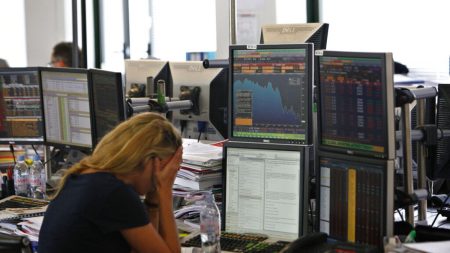Paragraph 1: Spain’s Year-End Inflation Surprise
Spain concluded 2024 with an unexpected surge in inflation, reaching an annual rate of 2.8% in December. This exceeded economists’ predictions of 2.6% and marked a notable increase from November’s 2.4% rate. The upward trend, continuing for four consecutive months from a low of 1.5% in September, signals persistent inflationary pressures as the nation enters 2025. The primary drivers of this surge were escalating fuel prices, rebounding from declines observed in December 2023, and robust growth in leisure and culture expenses. This unexpected rise presents a challenge for policymakers as they navigate the economic landscape of the new year.
Paragraph 2: Underlying Inflationary Pressures and Monthly Trends
Beyond the headline inflation figure, core inflation, which excludes volatile components like fresh food and energy, also climbed to 2.6% in December, up from 2.4% the previous month. This increase underscores the enduring nature of underlying price pressures, potentially posing a more significant concern for economic stability. Furthermore, the monthly consumer price increase held steady at 0.4% in December, matching the pace of the preceding two months. If this monthly trend persists into 2025, it could translate to an annualized inflation rate of nearly 4.8%, significantly exceeding current forecasts and potentially requiring more aggressive policy interventions.
Paragraph 3: The 2025 Inflation Outlook and the Role of Oil Prices
Looking ahead, the trajectory of Spain’s inflation in 2025 is heavily contingent on the unpredictable dynamics of global oil prices. The Spanish economic think tank Funcas projects an average inflation rate of 1.9% for the year under a baseline scenario. However, this projection is highly sensitive to fluctuations in oil prices. If oil prices rise to $85 per barrel, the average annual inflation could reach 2.5%, while a decline to $65 per barrel could lower it to 1.3%. This sensitivity highlights the continued vulnerability of the Spanish economy to global energy market volatility.
Paragraph 4: Alternative Forecasts and Economic Optimism
Despite the uncertainty surrounding oil prices, CaixaBank maintains a more pessimistic 2025 inflation forecast of 2.5%, attributing this to persistent inflation within the services sector, which has proven more resilient than initially anticipated. This divergence in forecasts underscores the complexity of predicting inflationary trends and the various factors influencing price pressures. However, despite the persistent inflation challenge, CaixaBank expresses optimism about the broader economic outlook. The bank points to the steady recovery of household purchasing power, supported by strong financial positions and a generally supportive global economic context, albeit slightly less robust than previous periods.
Paragraph 5: Market Reactions and Stock Performance
The immediate market reaction to the December inflation figures was muted, with Spain’s IBEX 35 index experiencing a marginal decline of 0.2% in light trading on Monday. Banking stocks were among the weakest performers, with Banco Sabadell, BBVA, and Banco Santander all registering declines. However, this short-term dip should be viewed within the broader context of strong stock market performance. Year-to-date, the IBEX 35 has seen gains of nearly 14%, and over the past two years, the index has surged by an impressive 40%, its best two-year performance since 2007.
Paragraph 6: Conclusion: Navigating Uncertainty in 2025
As Spain embarks on 2025, the economic landscape presents a mixed picture. While the unexpected year-end inflation spike raises concerns and highlights the persistent pressure on prices, particularly in the services sector, the overall economic outlook remains relatively positive. The key variable for Spain’s inflationary trajectory in the coming year will be the unpredictable movement of oil prices. Despite this uncertainty, strong stock market performance and the recovery of household purchasing power suggest underlying economic resilience. The challenge for policymakers will be to navigate these competing forces and maintain stability in the face of potential global economic headwinds.














